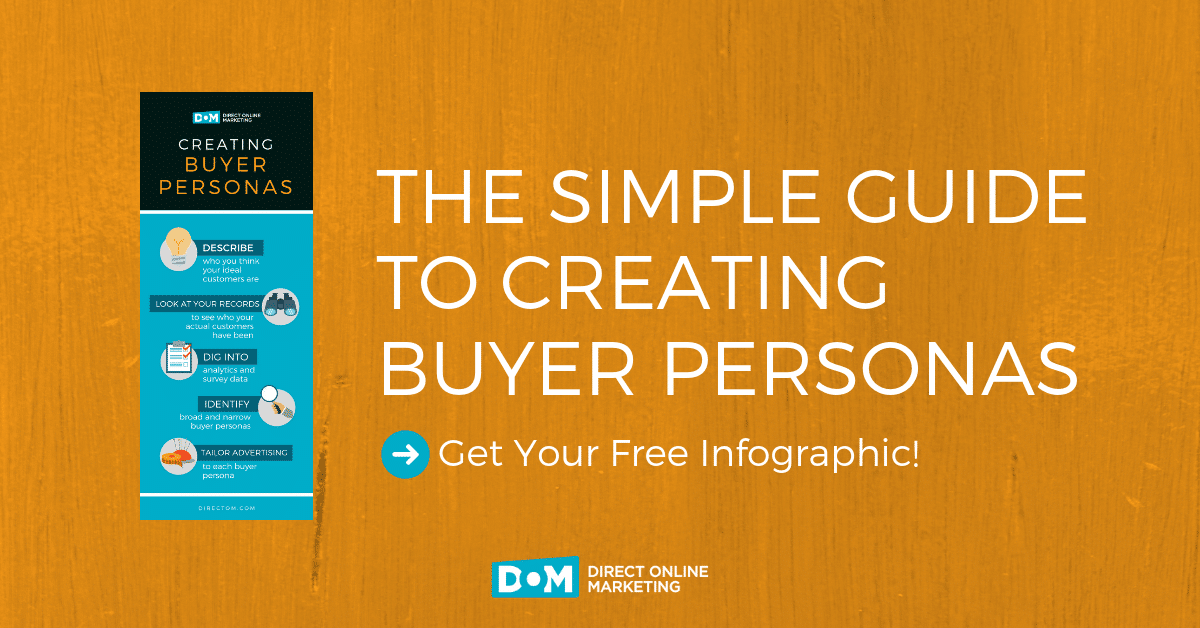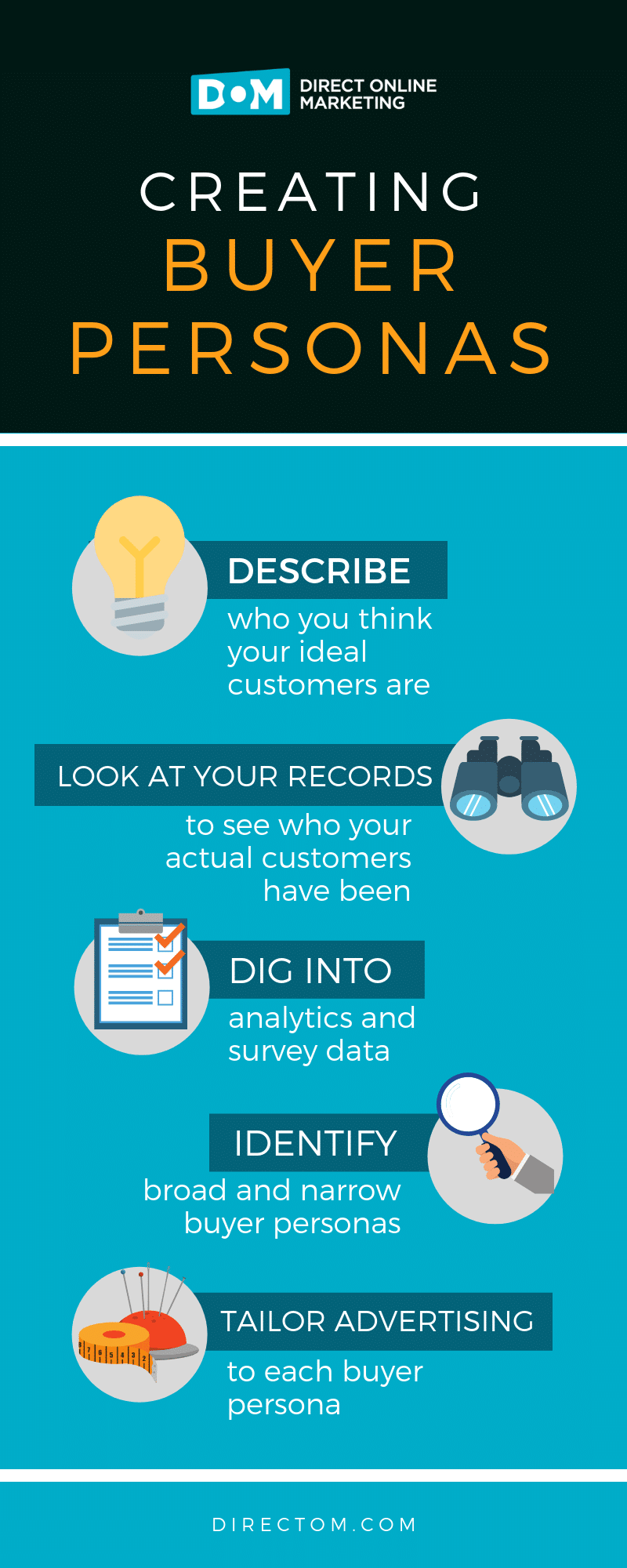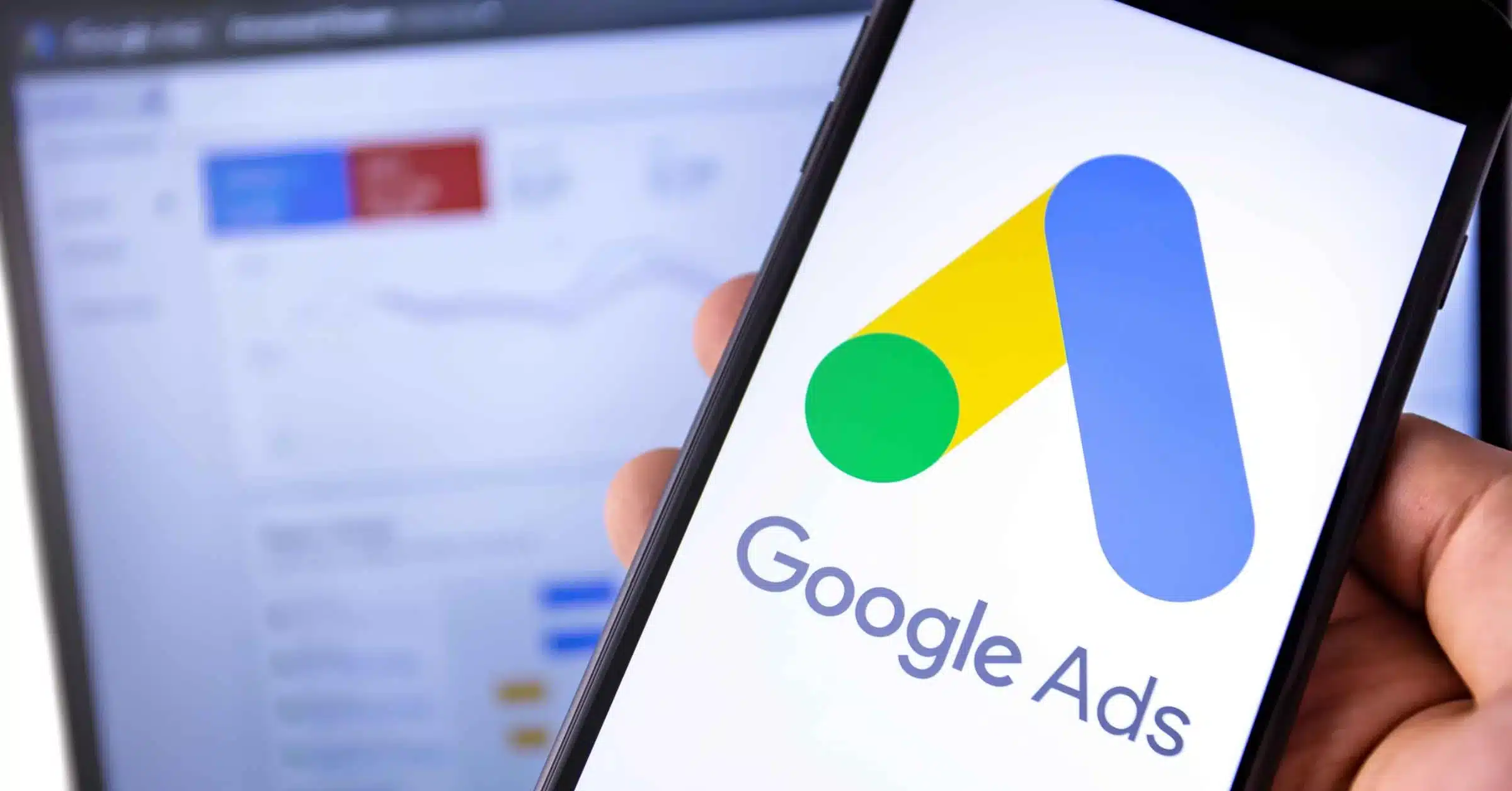
Jump Down to the Free Infographic
Buyer beware, or rather, advertiser beware.
If you’re an advertiser and aren’t leveraging buyer personas when you create your campaigns, your advertising may not be reaching its full potential. Buyer personas help you think through your advertising strategy; they help you craft ads that will appeal to each audience you hope to reach. When you tailor ad campaigns to specific buyer personas, your chances for leads, and sales increase.
A buyer isn’t just a person who wants to spend money on whatever your business offers — we often use the term “buyer” to anyone who makes a conversion, or completes the action you want. That could be buying from you, sure, but it might also just mean scheduling a consultation. You never know where a new customer is going to come from, so imagine your “buyer” as a spectrum of behaviors rather than as a potential sale. This will help you better understand the kinds of customers you have and the kinds of customers you want.
Creating a buyer persona begins with considering who your target audience is. Once you do that, you can build ad campaigns that target those buyers.
What is a buyer persona?
A buyer persona is a depiction, or portrayal, of your ideal buyer. Who is the perfect match for your product or service? A buyer persona represents the person you hope to attract to your products. All you need is an imagination and a grasp of who your business appeals to.
Buyer personas generally include information like this:
- Location
- Age
- Occupation
- Gender
- What their pain point is
- What motivates them to spend money
You can consider these categories in at least two ways:
- Who do you, as the business, believe would be interested in buying?
- Who has actually bought from you in the past?
The more in-depth your buyer persona build is, the more targeted your landing pages and sales strategies can be. When optimizing a landing page, one should consider who the landing page is being optimized for.
What is a buyer persona used for?
Buyer personas can be used to drive performance in various forms of digital marketing. We’ve taken advertising campaigns as our example so far, and here are some other areas in which they provide value:
SEO/Organic: you can’t always control where your landing pages rank, but you know where you want them to rank. Tailor buyer personas for where pages do rank and where you want them to rank.
Email Marketing: It’s best practice in email marketing to establish the buyer persona of your subscribers.
Content Marketing: If you want content that drives leads, it needs to be tailored for someone. A buyer persona should always be included in a sophisticated content marketing strategy.
How to Create a Buyer Persona
Let’s break down the basic steps.
Research to Establish Your Ideal Buyer Persona
Like most things in digital marketing, research is key. Unless you are a brand new business, you already have a record of who has bought your product. Now it’s time to dive in and study who your previous buyers are. This can help you tailor ads to appeal to similar buyers in the future.
Essentially, you want to discover consistent traits across all buyers. When you find consistencies, you establish a buyer persona.
Google Analytics
You can start this discovery process by leveraging data from places such as Google Analytics. All your pages should be tracking information in Google Analytics, including form submissions. With Google Analytics, you’ll be able to discover facts about your buyers, such as age, location, and gender.
Similarly, on the backend of your shopping site, you should be able to discover the average customer spend.
Surveys
When it comes to the more complex matters, you might need to leverage surveys. For example, what pain point causes a buyer to purchase your solution? You might be surprised to discover new pain points that have emerged since your last marketing campaign. You may learn that your customers have consistent problems that you don’t offer a complete solution for. In this case, you may venture into new product development.
If you publish a newsletter, maybe ask your subscribers what type of content they enjoy receiving. Do they prefer the informational to the promotional? Do they want more “deals” that can be acted upon immediately? Why did they subscribe? You’ll never know if you don’t ask.
Commonalities Become the Persona
From your surveys and analytics, you are seeking common traits among all of your buyers. These commonalities build the buyer persona for you. At least, they create a general buyer persona. The general buyer persona gives you a clear view of who buys your products or who opens your newsletters.
Divide & Conquer
Now, it’s important to distinguish broad from narrow buyer personas.
In other words, once you’ve taken an overview of your past buyers, you should identify buyer personas that are more targeted and less general. This allows you to create buyer persona niches. In the advertising and newsletter games, the more niche you are, the more you convert leads and sales. In advertising specifically, crafting a narrow buyer persona can save you advertising spend. This is because you end up devoting less money trying to sell to people who are less apt to make a purchase.
Once you’ve found your niche buyer personas, name them. These names can be used to filter newsletter lists and Google Ads ad groups.
Using these buyer personas, you can now create a custom ad or newsletter copy. You can strategically target new SEO keyword campaigns (think a software company or marketing agency crafting content around business phone services because your personas also have an interest in that topic). It’s amazing what happens when you understand exactly who you are marketing to. It helps you save ad spend, increase newsletter open rates, and generate more leads from SEO. The power of intelligent buyer persona creation has no ceiling.



